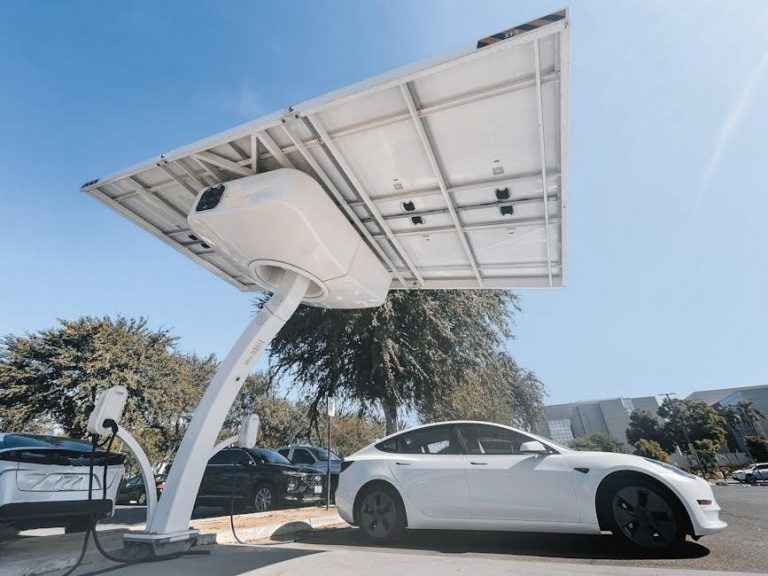Safety Precautions and Instructions
Always unplug the charger before maintenance or cleaning to avoid electric shock. Wear safety goggles and protective clothing when handling batteries. Avoid touching eyes near batteries. If acid contacts skin or clothing, wash immediately with soap and water. For eye exposure, flood with cold water and seek medical help. Keep the charger away from damaged cords or plugs and ensure proper ventilation to prevent gas buildup. Never allow DC output clips to touch each other or connect/disconnect them while the charger is powered. Follow all safety rules and operating instructions carefully to ensure safe and effective use of the DieHard 12 Volt Battery Charger.
- Disconnect the charger before any maintenance or cleaning.
- Wear protective gear, including safety goggles and gloves.
- Avoid sparking near the battery to prevent explosion risks;
- Ensure proper ventilation to avoid hydrogen gas buildup.
Read and follow all safety instructions in the manual to minimize risks and ensure safe operation.
1.1. Personal Safety Measures
Wear protective gear, including safety goggles and gloves, when handling batteries to prevent injury from acid splashes. Avoid touching your eyes or face near the battery to reduce the risk of contamination. If battery acid comes into contact with skin or clothing, immediately wash the affected area with soap and water. In case of eye exposure, flush with cold running water for at least 10 minutes and seek medical attention promptly. Ensure proper ventilation in the work area to prevent the accumulation of explosive hydrogen gas. Do not wear loose jewelry that could cause electrical shorts. Keep children and pets away from the charging area to avoid accidents.
- Wear safety goggles and gloves for protection.
- Avoid touching eyes or face near the battery.
- Wash acid exposure with soap and water immediately.
- Flush eyes with cold water for 10 minutes if acid enters.
- Ensure good ventilation to prevent gas buildup.
Following these personal safety measures ensures a safe charging experience.
1.2. Battery Handling and Preparation
Before charging, ensure the battery is a 12-volt lead-acid type compatible with the DieHard charger. Clean the terminals using a wire brush to remove corrosion and ensure proper connections. Wear gloves to protect against acid and electrical shock. Check the battery voltage using a voltmeter to confirm it matches the charger’s settings; Remove any protective caps and ensure the vents are clear for gas escape. If the battery is outside the vehicle, place it on a stable, non-conductive surface. Avoid overcharging, as it can damage the battery. Always disconnect the negative (ground) terminal first to prevent sparking. Proper preparation ensures safe and efficient charging.
- Verify the battery is 12-volt lead-acid type.
- Clean terminals to ensure good connections.
- Check voltage to match charger settings.
- Disconnect the negative terminal first.
Proper handling and preparation are essential for safe and effective charging.
1.3. DC Connection Precautions
When connecting the DC output clips, ensure the charger is off and the AC plug is removed from the outlet. Never allow the clips to touch each other or connect/disconnect them while the charger is powered. Attach the positive clip to the positive battery terminal and the negative clip to the chassis or negative terminal, following proper polarity. Avoid sparking near the battery, as it may cause explosion; Use insulated tools to prevent short circuits. If the battery is outside the vehicle, place it on a stable surface. Always check for damaged cables or loose connections before proceeding. Proper DC connections are critical for safe and effective charging.
- Ensure the charger is off before connecting DC clips.
- Attach positive clip to positive terminal and negative to chassis.
- Avoid sparking near the battery to prevent explosion.
- Use insulated tools to prevent short circuits.
Follow these precautions to minimize risks during DC connections.
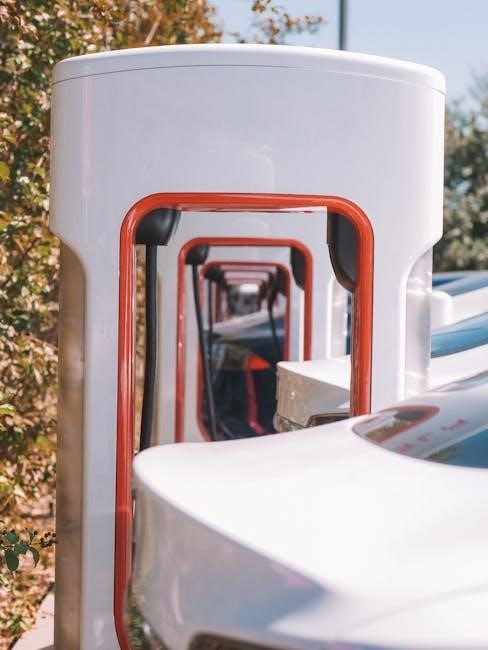
Understanding the DieHard 12 Volt Battery Charger
The DieHard 12 Volt Battery Charger is a fully automatic, microprocessor-controlled device designed for efficient charging of lead-acid batteries. It features overcharge protection, adjustable charge rates, and compatibility with various battery types, ensuring safe and reliable performance.
- Fully automatic microprocessor control for precise charging.
- Adjustable charge rate selector for different battery needs.
- Compatible with standard 12-volt lead-acid batteries.
This charger is engineered for durability and user-friendly operation, making it ideal for both professional and home use.
2.1. Key Features and Specifications
The DieHard 12 Volt Battery Charger is equipped with advanced features ensuring efficient and safe battery maintenance. It includes a microprocessor-controlled system for precise charging, automatic shut-off to prevent overcharging, and multiple charge rate settings to accommodate different battery capacities. The charger is compatible with both 6-volt and 12-volt lead-acid batteries, making it versatile for various applications. It also features a built-in ammeter to monitor charging progress and a durable design for long-lasting performance. With a user-friendly control panel and clear LCD display, the charger provides ease of operation. It supports charge rates of 2, 6, and 12 amps, catering to quick charging needs and trickle charging for maintenance. The device is backed by a three-year warranty, reflecting its reliability and quality.
- Microprocessor-controlled charging for precision.
- Automatic shut-off to prevent overcharging.
- Multiple charge rate settings for flexibility.
- Compatibility with 6V and 12V lead-acid batteries.
- Built-in ammeter for real-time monitoring.
- Durable construction for extended lifespan.
- Three-year warranty for added assurance.
These features make the DieHard 12 Volt Battery Charger a robust and reliable solution for maintaining and charging automotive batteries effectively.
2.2. Compatible Battery Types
The DieHard 12 Volt Battery Charger is designed to work with a variety of lead-acid batteries, including standard flooded, deep cycle, and AGM (Absorbent Glass Mat) batteries. It is compatible with both 6-volt and 12-volt battery systems, making it versatile for use in cars, trucks, boats, and other vehicles. The charger also supports maintenance charging for marine and RV batteries, ensuring optimal performance and longevity. Its universal compatibility makes it suitable for a wide range of automotive and recreational applications, providing reliable charging for different battery types and sizes.
- Standard flooded batteries.
- Deep cycle batteries.
- AGM (Absorbent Glass Mat) batteries.
- 6-volt and 12-volt lead-acid batteries.
- Marine and RV batteries.
This versatility ensures the charger can meet the needs of various vehicles and applications, providing consistent and effective charging across different battery types.
2.3. Charge Rate Selector Switch
The DieHard 12 Volt Battery Charger features a Charge Rate Selector Switch, allowing users to choose the appropriate charging rate for their battery. This switch offers multiple settings, such as 2 Amp, 4 Amp, and higher rates, ensuring compatibility with various battery sizes and types. Selecting the correct charge rate helps prevent overcharging or undercharging, which can damage the battery or reduce its lifespan. The switch is easy to use, enabling precise control over the charging process. By matching the charge rate to the battery’s requirements, users can optimize charging efficiency and maintain the health of their battery. This feature is particularly useful for different applications, from small batteries in cars to larger ones in trucks or boats.
- Multiple charge rate settings for versatility.
- Prevents overcharging and undercharging.
- Easy to use for precise control.
- Compatible with various battery sizes and types.
This feature enhances the charger’s adaptability, making it suitable for a wide range of vehicles and equipment.

Preparing to Charge the Battery
Check the battery polarity to ensure correct connections. Clean the terminals to maintain proper conductivity. Set up the charger according to the manual’s instructions for safe and effective charging.
- Verify battery polarity to avoid incorrect connections.
- Clean terminals for optimal conductivity.
- Follow manual guidelines for charger setup.
Proper preparation ensures a safe and efficient charging process.
3.1. Checking Battery Polarity
Ensure the battery terminals are correctly identified to avoid short circuits. The positive terminal is typically marked with a “+” or “POS” label and often has a larger diameter. The negative terminal is marked with a “-” or “NEG” label. Always confirm the polarity before connecting the charger to prevent damage or explosion risks. If unsure, consult the battery or vehicle manufacturer’s documentation for clarification. Proper polarity alignment is crucial for safe and effective charging. Misconnection can lead to serious safety hazards, including electrical shock or battery explosion. Always double-check the terminals before proceeding with the charging process.
- Identify the positive (+) and negative (-) terminals.
- Ensure the charger clips match the correct polarity.
- Consult the manual if unsure about terminal locations.
Correct polarity is essential for safe battery charging.
3.2. Cleaning Battery Terminals
Clean battery terminals to ensure proper conductivity and prevent charging issues. Disconnect the battery from the vehicle and any charging device. Use a wire brush or terminal cleaner to remove corrosion, dirt, or oxidation from both the positive and negative terminals. For stubborn corrosion, mix baking soda and water to create a paste, apply it to the terminals, and scrub gently. Rinse with clean water and dry thoroughly with a cloth. Ensure the terminals are free of debris and moisture before reconnecting the battery or charger. Regular cleaning helps maintain optimal performance and extends battery life.
- Disconnect the battery before cleaning.
- Use a wire brush to remove corrosion and dirt.
- Apply baking soda paste for stubborn corrosion.
- Rinse and dry terminals thoroughly.
Clean terminals ensure safe and efficient charging.
3.3. Setting Up the Charger
Before using the DieHard 12 Volt Battery Charger, ensure it is properly set up. First, check that the charger is fully assembled according to the instructions. Select the appropriate charge rate using the Charge Rate Selector Switch, choosing between 2 Amp, 4 Amp, or higher settings based on your battery type and charging needs. Ensure the charger is set to the correct voltage (6V or 12V) using the voltage selector switch. Plug the charger into a 120V AC electrical outlet only after connecting it to the battery. The charger operates automatically, with no need for an On/Off switch. Always follow the setup instructions to ensure safe and efficient charging.
- Select the appropriate charge rate for your battery.
- Set the voltage to match your battery (6V or 12V).
- Plug in the charger only after connecting to the battery.
- Allow the charger to operate automatically.
Proper setup ensures safe and efficient battery charging.

Operating the DieHard 12 Volt Battery Charger
Plug the charger into a 120V AC outlet after connecting it to the battery. The charger operates automatically, with no On/Off switch required. Monitor the charging process using the ammeter to ensure proper charging. Adjust settings as needed for optimal performance and safety.
4.1. Selecting the Charge Rate
Use the Charge Rate Selector Switch to choose the appropriate setting for your battery. Settings include 2 Amp, 4 Amp, and higher rates for faster charging. Always match the charge rate to the battery’s capacity and type. For maintenance charging, select the lower rate to prevent overcharging. For deep cycle batteries, use the specific deep cycle setting. Ensure the charger is set to the correct voltage (6V or 12V) before connecting to the battery. Refer to the manual for recommendations based on battery type and capacity. Proper selection ensures efficient and safe charging, preventing damage to the battery or charger. Always follow the guidelines provided in the manual for optimal results.
- Choose the charge rate based on battery capacity and type.
- Select lower rates for maintenance charging.
- Use deep cycle settings for deep cycle batteries.
- Ensure correct voltage selection (6V/12V).
Proper charge rate selection is crucial for battery longevity and safety.
4.2. Connecting the Charger to the Battery
Before connecting the charger, ensure the charger is unplugged from the AC power source. Identify the battery terminals, with the positive (+) terminal typically larger than the negative (-). Attach the charger’s positive (red) clip to the battery’s positive terminal and the negative (black) clip to the negative terminal. For vehicles, connect the negative clip to a metal surface on the chassis or engine block to ensure proper grounding. Avoid touching the clips together to prevent sparks. After securing the connections, plug in the charger and select the appropriate charge rate. Monitor the charging process to prevent overcharging, which can damage the battery. Always follow the manual’s instructions for specific connection guidelines.
- Unplug the charger before connecting to the battery.
- Connect positive (red) clip to the positive terminal.
- Connect negative (black) clip to the negative terminal or chassis.
- Avoid touching clips together to prevent sparks.
Ensure all connections are secure and properly aligned to avoid damage or safety hazards.
4.3. Monitoring the Charging Process
Monitor the charging process to ensure the battery charges safely and efficiently. Check the ammeter to observe the charge rate and ensure it matches the selected setting. Periodically inspect the battery voltage using a voltmeter to avoid overcharging. Look for signs of a fully charged battery, such as a stable voltage reading or the charger entering float mode. Keep the area well-ventilated to prevent hydrogen gas buildup. Avoid leaving the charger unattended for extended periods. If the charger has an automatic shut-off feature, it will stop charging once the battery is full. Always follow the manual’s guidelines for monitoring to prevent overcharging and potential battery damage.
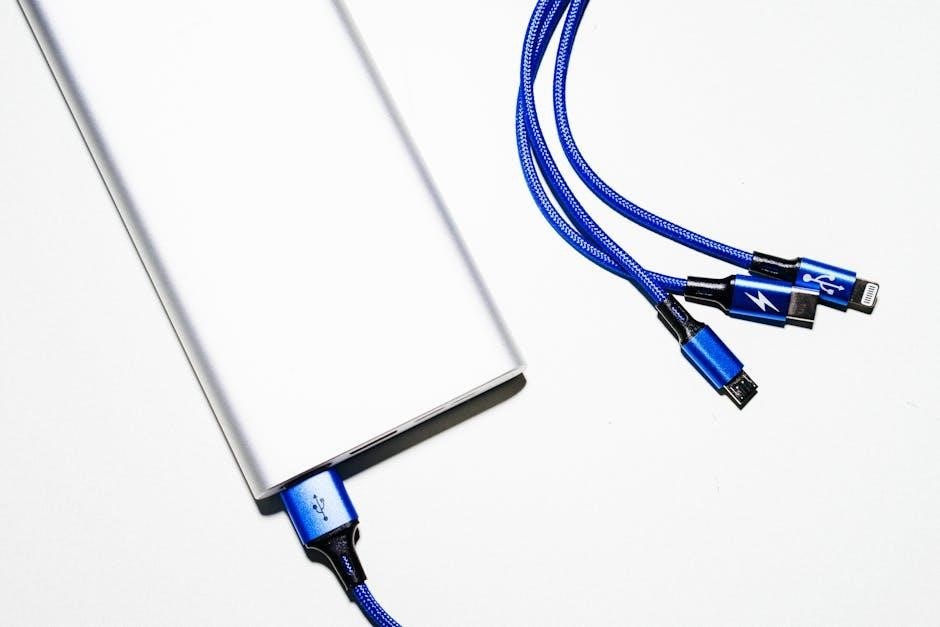
- Check the ammeter for the charge rate.
- Inspect battery voltage periodically.
- Ensure proper ventilation to avoid gas buildup.
- Use the charger’s automatic features if available.
Regular monitoring ensures the battery is charged safely and efficiently without risking damage or safety hazards.
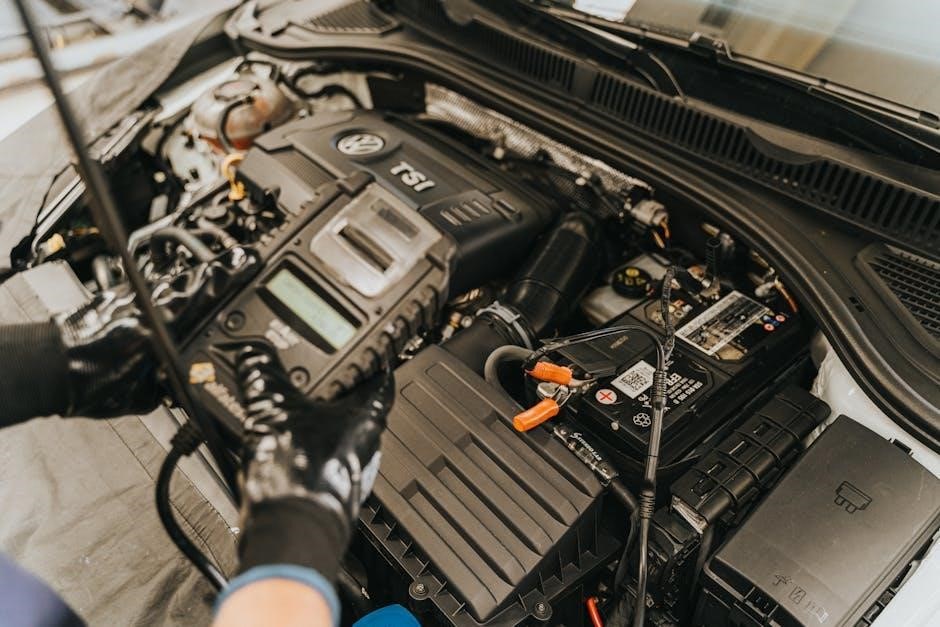
Maintenance and Storage
Regularly inspect and clean the charger to ensure optimal performance. Store it in a cool, dry place away from direct sunlight. Avoid extreme temperatures and moisture. Check for any damage or wear on cords and plugs. Proper maintenance and storage extend the charger’s lifespan and ensure safe operation.
- Clean the charger and cables regularly.
- Store in a cool, dry, well-ventilated area.
- Avoid exposure to extreme temperatures.
Proper care ensures reliability and longevity of the DieHard 12 Volt Battery Charger.
5.1. Regular Maintenance Tips
Regular maintenance ensures the DieHard 12 Volt Battery Charger operates efficiently. Inspect the charger and cables for damage or wear. Clean battery terminals and clips with a wire brush to prevent corrosion. Store the charger in a cool, dry, well-ventilated area away from direct sunlight. Avoid exposing it to moisture or extreme temperatures. Check the AC outlet for full voltage before use. Ensure all connections are secure and free from corrosion. Replace any damaged cords or plugs promptly. Regular cleaning and inspection help maintain performance and extend the charger’s lifespan.
- Inspect charger and cables for damage or wear.
- Clean terminals and clips with a wire brush.
- Store in a cool, dry, well-ventilated area.
- Check AC outlet for full voltage before use.
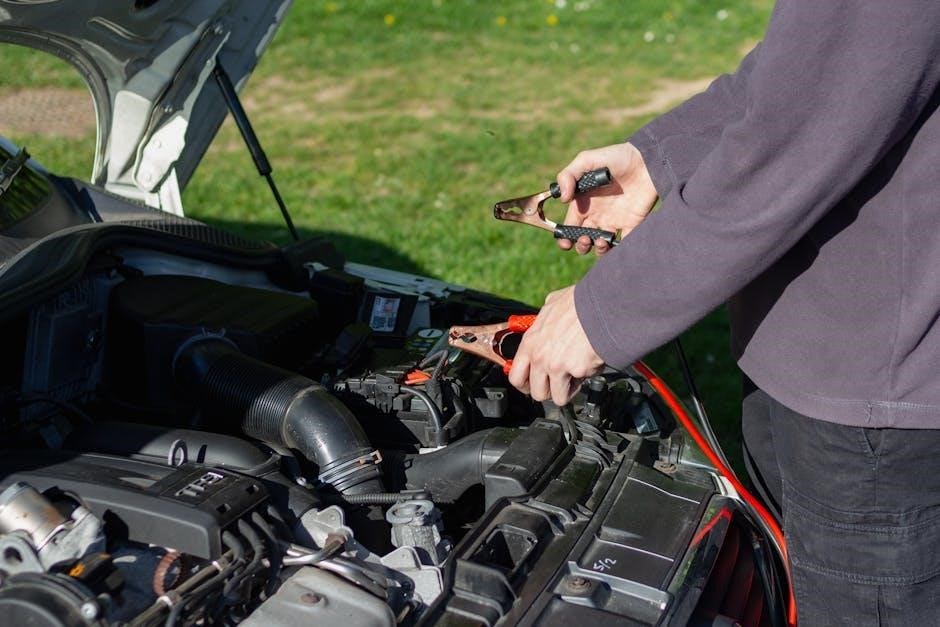
Proper maintenance ensures safe and reliable operation of the DieHard 12 Volt Battery Charger.
5.2. Proper Storage Conditions
To ensure longevity and reliability, store the DieHard 12 Volt Battery Charger in a cool, dry, well-ventilated area away from direct sunlight and moisture. Avoid extreme temperatures and humidity, as these can damage internal components. Keep the charger away from flammable materials and out of reach of children. Store the unit in an upright position to prevent liquid leakage, if applicable. Disconnect the charger from the power source and secure the cables to prevent tangling or damage. Do not store the charger in enclosed spaces without adequate ventilation. Proper storage conditions help maintain the charger’s performance and extend its lifespan.
- Store in a cool, dry, well-ventilated area.
- Avoid direct sunlight, moisture, and extreme temperatures.
- Keep away from flammable materials and children.
- Disconnect from the power source during storage.
Following these guidelines ensures the charger remains in optimal condition for future use.
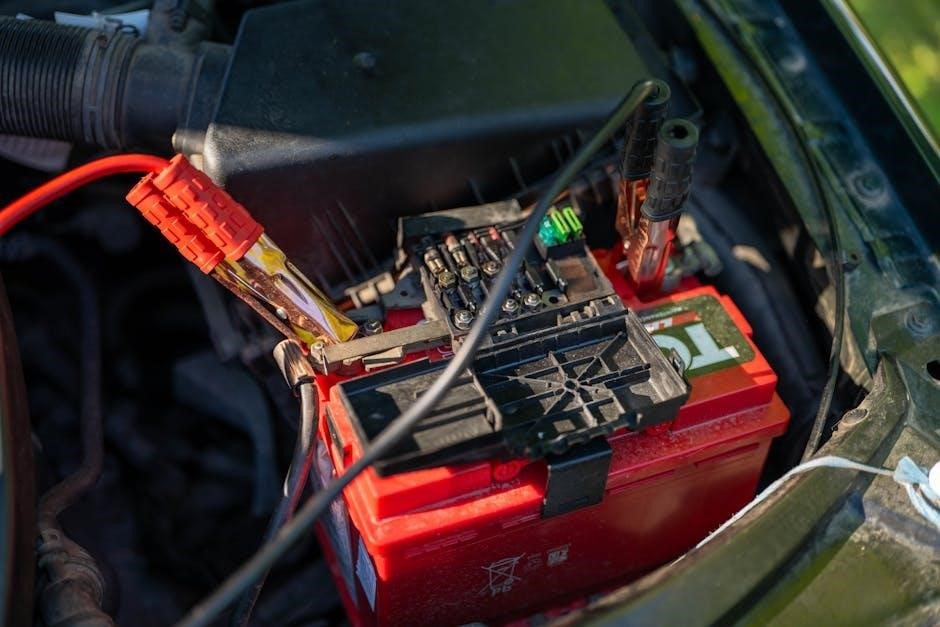
Troubleshooting Common Issues
Identify symptoms like no power, clicking sounds, or circuit breaker cycling. Check connections, charger settings, and battery condition. Consult the manual for specific solutions to resolve issues effectively.
- Charger not turning on: Ensure proper power connection.
- Audible clicking: Check for faulty settings or battery issues.
- Circuit breaker cycling: Verify connections and settings.
6.1. Charger Will Not Turn On
If the DieHard 12 Volt Battery Charger fails to turn on, start by ensuring it is properly plugged into a functioning AC outlet. Check the power cord for damage and verify the circuit breaker or fuse in your home’s electrical panel has not tripped. If the outlet is working, inspect the charger’s internal components for faults. Consult the troubleshooting section of the manual for detailed diagnostic steps. If the issue persists, contact customer support or a professional for assistance. Always follow safety guidelines when troubleshooting electrical devices to avoid potential hazards.
- Ensure the charger is plugged into a live outlet.
- Check the circuit breaker or fuse box.
- Inspect the power cord for damage;
- Consult the manual for further troubleshooting guidance.
Addressing the issue promptly will help restore functionality and ensure safe operation.
6.2. Audible Clicking Sound
An audible clicking sound from the DieHard 12 Volt Battery Charger may indicate a circuit breaker cycling issue. This could be due to incorrect charger settings or a defective battery. To resolve this, first, check that the charger settings match the battery type and voltage. Ensure the battery is in good condition and properly connected. If the issue persists, inspect the battery for internal faults or short circuits. Refer to the troubleshooting guide in the manual for detailed steps. If the problem remains unresolved, contact customer support for further assistance. Always prioritize safety when diagnosing electrical issues to prevent potential hazards.
- Verify charger settings align with battery specifications.
- Inspect the battery for damage or short circuits.
- Consult the manual for troubleshooting procedures.
Addressing the clicking sound promptly will help maintain the charger’s efficiency and safety.

6.3. Circuit Breaker Cycling
Circuit breaker cycling in the DieHard 12 Volt Battery Charger may occur due to incorrect settings or a defective battery. Check if the charger settings match the battery type and voltage. Ensure all connections are secure and free from corrosion. Verify the battery’s condition; a shorted or deeply discharged battery can trigger this issue. If the problem persists, unplug the charger and allow it to reset. Consult the troubleshooting guide in the manual for detailed steps. If the issue remains unresolved, contact customer support for assistance. Always ensure proper setup and maintenance to prevent such interruptions and maintain optimal charging performance.
- Check charger settings for correct battery type and voltage.
- Inspect and clean all connections for corrosion or damage.
- Test the battery for shorts or deep discharge.
Addressing circuit breaker cycling ensures reliable and efficient battery charging.

Warranty and Customer Support
The DieHard 12 Volt Battery Charger is backed by a three-year full warranty. For customer assistance, call the toll-free number or visit Sears’ customer support website.
- Three-year full warranty coverage.
- Valid when operated as per instructions.
- Contact customer support for repairs or replacements.
Refer to the manual for warranty terms and contact details.
7.1. Warranty Terms and Conditions
The DieHard 12 Volt Battery Charger is covered by a three-year full warranty, ensuring protection against defects in materials and workmanship. This warranty is valid only when the product is used in accordance with the provided instructions and safety guidelines. The warranty covers repairs or replacements at no additional cost to the customer. For warranty claims, customers must contact Sears Brands Management Corporation through their toll-free customer support line or visit their official website. Proof of purchase and proper usage are required for warranty validation. The warranty does not cover damages resulting from misuse, neglect, or unauthorized modifications. Refer to the manual for complete warranty details and conditions.
7.2. Contacting Customer Service
For assistance with the DieHard 12 Volt Battery Charger, contact Sears Brands Management Corporation customer service toll-free from 7 AM to 5 PM CT. Call their customer support line or visit the official DieHard website for inquiries. You can also reach them at their headquarters in Hoffman Estates, IL 60179. For warranty claims, troubleshooting, or general questions, use the provided contact methods. Ensure to have your product model number and purchase details ready for efficient service. The customer service team is available to address concerns, provide repair options, or offer replacement parts as needed.
Properly following the DieHard 12 Volt Battery Charger manual ensures safe, effective, and reliable performance. Regular maintenance and adherence to safety guidelines maximize battery life and charger efficiency. Troubleshooting common issues and storing the charger correctly prolong its durability. Always refer to the manual for detailed instructions and warranty information. By following these guidelines, you can enjoy optimal charging and long-term satisfaction with your DieHard 12 Volt Battery Charger.
8.1. Final Tips for Safe and Effective Use
For optimal performance and longevity of your DieHard 12 Volt Battery Charger, always select the correct charge rate based on battery type and condition. Regularly monitor the charging process to avoid overcharging, which can damage the battery. Keep the charger and battery terminals clean and free from corrosion to ensure proper electrical connections. Store the charger in a cool, dry place away from direct sunlight and flammable materials. Always refer to the manual for troubleshooting common issues and follow the recommended maintenance schedule. By adhering to these guidelines, you can ensure safe, efficient, and reliable operation of your DieHard 12 Volt Battery Charger.
- Monitor charging progress to prevent overcharging.
- Keep terminals clean for optimal performance.
- Store the charger in a cool, dry environment.
- Refer to the manual for troubleshooting guidance;
8.2. Importance of Following the Manual
Adhering to the manual ensures safe and effective use of the DieHard 12 Volt Battery Charger. It provides critical safety precautions, operating instructions, and troubleshooting guidance, reducing the risk of accidents and equipment damage. Following the manual helps maintain warranty validity, as improper use may void coverage. Proper charging practices outlined in the manual prevent overcharging, which can extend battery life. Additionally, the manual offers tips for optimal performance and maintenance, ensuring the charger operates efficiently. By following the manual, users can avoid common mistakes, ensuring reliability and longevity of both the charger and battery. Always refer to the manual for guidance tailored to your specific model and needs.
- Ensures compliance with safety guidelines.
- Helps maintain warranty coverage.
- Provides troubleshooting solutions.
- Optimizes battery and charger performance.
